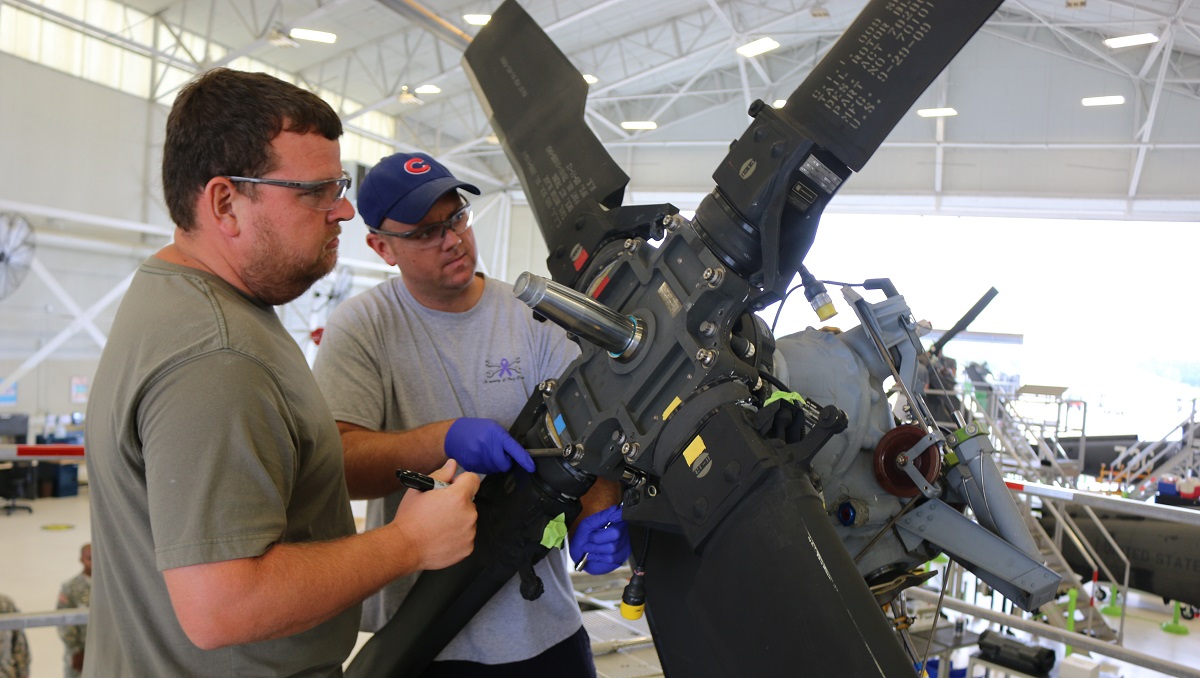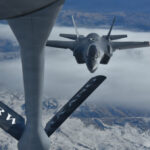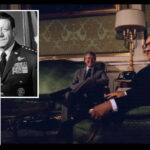
The technical know-how required to operate, maintain, and sustain technologically complex aircraft, artificial intelligence systems, communication systems, weapons systems, and vehicles in future combat environments may be beyond the capability of many Army personnel.
Continuous transformation is one of the Chief of Staff of the Army’s four focus areas that aims to prepare the Army for the rapid technological advancements that have the potential to change the character of war itself. The technical know-how required to operate, maintain, and sustain technologically complex aircraft, artificial intelligence systems, communication systems, weapons systems, and vehicles in future combat environments may be beyond the capability of many army personnel. Additionally, many of these advanced systems and software are proprietary. The conflicts in Iraq and Afghanistan required extensive augmentation by highly skilled contractors partially due to these reasons. As a result, the military does not intend to, nor can it operate without contract personnel in a future conflict. In fact, contractors are now considered part of the Total Force. From Joint Publication 4-10, Operational Contract Support:
“The continual introduction of high-tech equipment, coupled with force structure and manning reductions, mission-specific force cap restrictions, and high operating tempo, means contracted support will augment military forces in most operations.”
The reliance on contractors as part of the total force introduces several benefits, considerations, challenges, and risks; many of which are identified in Joint Publication (JP) 4-10. However, JP 4-10 does not address how the inclusion of contractors as part of the total force could impact GEN George’s other focus areas. The intent of this article is to explore the extent to which the use of (and even reliance upon) could affect the culture of warfighting in the Army.
One can interpret a culture of warfighting as being one in which every member has a “warrior mindset” and understands that the mission of the Army is to fight and win wars. Every member should recognize that their role contributes to that fight—even if their “weapon” is not a rifle. Warfighting is an inherently governmental function, but during the Global War on Terror (GWOT) contractors often outnumbered military personnel. According to a 2019 Congressional Report, 6,967 US servicemembers were killed and 52,802 wounded in GWOT. An estimated 3,413 civilian contractors were killed and an additional 38,953 sustained “work-related injuries.” While the military casualty totals were greater in total, the numbers can be misleading. In the early days of the conflicts, contractors accounted for only 4% of all fatalities, but by the peak of the wars in Iraq and Afghanistan (around 2009), more contractors were killed annually than military personnel. Enemy fires do not distinguish between military and non-military personnel, so the risks to bodily harm are the same.
If a soldier is performing the same task as a contractor and the contractor is taking similar risks to life and limb, how is one a warfighter and the other not? If the contractors performing the same roles are not warfighters—then how can soldiers consider themselves one? If they are then both warfighters, then isn’t the contractor performing an inherently governmental function? This logical inconsistency can have a direct impact on the warfighting mentality of soldiers. If a contractor can do the same job for more pay, what is the incentive for the soldier to serve in the military?
The reliance on contractors also introduces additional burdens on the commander due to increases in administrative complexity. There are additional administrative and legal issues regarding the employment of, organization of, direction of, and coordination for contractor augmentation. Failure to properly incorporate contractor support into operations during the early GWOT was identified as a major contributor to the inefficiency and mismanagement of contracts during that conflict. It also created additional legal challenges associated with fraud and waste during GWOT, with audits required to recoup $10 billion between 2003 and 2011. Increasing the scale of contractor support for large-scale combat operations will increase the probability of fraud, which will place the commander at risk. As a result, it could redirect much of the commander’s focus away from warfighting. To mitigate these risks, the Army could consider increasing its oversight capacity (e.g., contracting and legal experts), especially at lower levels.
The greatest risk in the reliance of contractors is the fact that they can refuse to deploy to a threat environment or leave when they wish—a distinct difference from the military warfighter.
Contractors also add additional limitations on and challenges to commanders that could cause leader complacency (namely via liability avoidance and disempowerment) that detracts from a culture of warfighting. Contractors, unlike military personnel, lack flexibility. Contractors can only perform duties outlined in the scope of their contract; a commander does not actually command them. From JP 4-10 “Command authority does not include the authority to direct contractor or contractor personnel actions outside the terms and conditions of their contract.” The greatest risk in the reliance of contractors is the fact that they can refuse to deploy to a threat environment or leave when they wish—a distinct difference from the military warfighter. A dependency on contractors for skill sets places the military at risk should contractors refuse to fulfill the necessary role, creating a void if there is not a military person to assume it.
GEN George is quoted as saying: “The goal is to get leaner, lighter, and less complex to allow those units to focus on their warfighting mission.” Perhaps then, the Army should narrow down its mission to that which is inherently governmental and leverage Department of the Army civilian or contractor augmentation to a much greater extent for non-essential support roles that do not require forward deploying into a combat zone, allowing for a leaner army that is more focused on its warfighting mission. Recent force structure changes have reduced the active army by approximately 24,000 personnel as it reorients to large-scale combat operations from counterinsurgency, but a preponderance of the reductions is in scouts, special forces, and other combat arms to provide billets for occupational specialties needed for the future fight, such as cyberspace, electronic warfare, and space. But what is the Army’s actual warfighting mission of which GEN George is speaking? Which functions are inherently governmental (require engaging enemy forces) and must be forward deployed to combat zones while others could be conducted via reach back from sanctuary to some extent (cyber, space, AI, administrative, etc.)?
Given the technology requirements and proprietary equipment some contract augmentation in the forward threat area will be unavoidable, but it should be minimized. The Army should reduce the dependency on contract support to mitigate some of the risks and challenges associated with the complete reliance on them. How, then, can the Army maintain and operate complex systems in a threat environment? Contractors could be used at logistical support activities outside of major threats, while a smaller contingent of specialized active military personnel operates within the threat ring. Perhaps the Army should consider revamping and reimagining the Army Reserve and its purpose. Reserve personnel with expertise can perform high-tech jobs in their civilian capacity but be activated on military orders as warfighters when called forward (on retainer-like a lawyer). The Army Reserve already houses a majority of civil affairs, psychological operations, and logistics units for similar reasons. The Army needs to conduct further studies on this issue and examine how much of its force structure addresses protection of contractors and contractor-operated capabilities. If the relationships between operating forces and the contractors supporting them needs change so to be better prepared for large-scale combat operations, corrective actions need to be taken now.
Steven Chetcuti is a dual-branched Aviation and Military Intelligence lieutenant colonel in the U.S. Army. He has multiple deployments conducting Aerial Intelligence, Surveillance, and Reconnaissance operations in Iraq and Afghanistan. Steven has commanded at the Company and Battalion levels. He is a student in the AY24 Resident Course at the U.S. Army War College in the Carlisle Scholars Program.
The views expressed in this article are those of the author and do not necessarily reflect those of the U.S. Army War College, the U.S. Army, or the Department of Defense.
Photo Description: Aviation Maintenance Mission at Fort Rucker showcases best of government-contractor effort.
Photo Credit: U.S. Army




